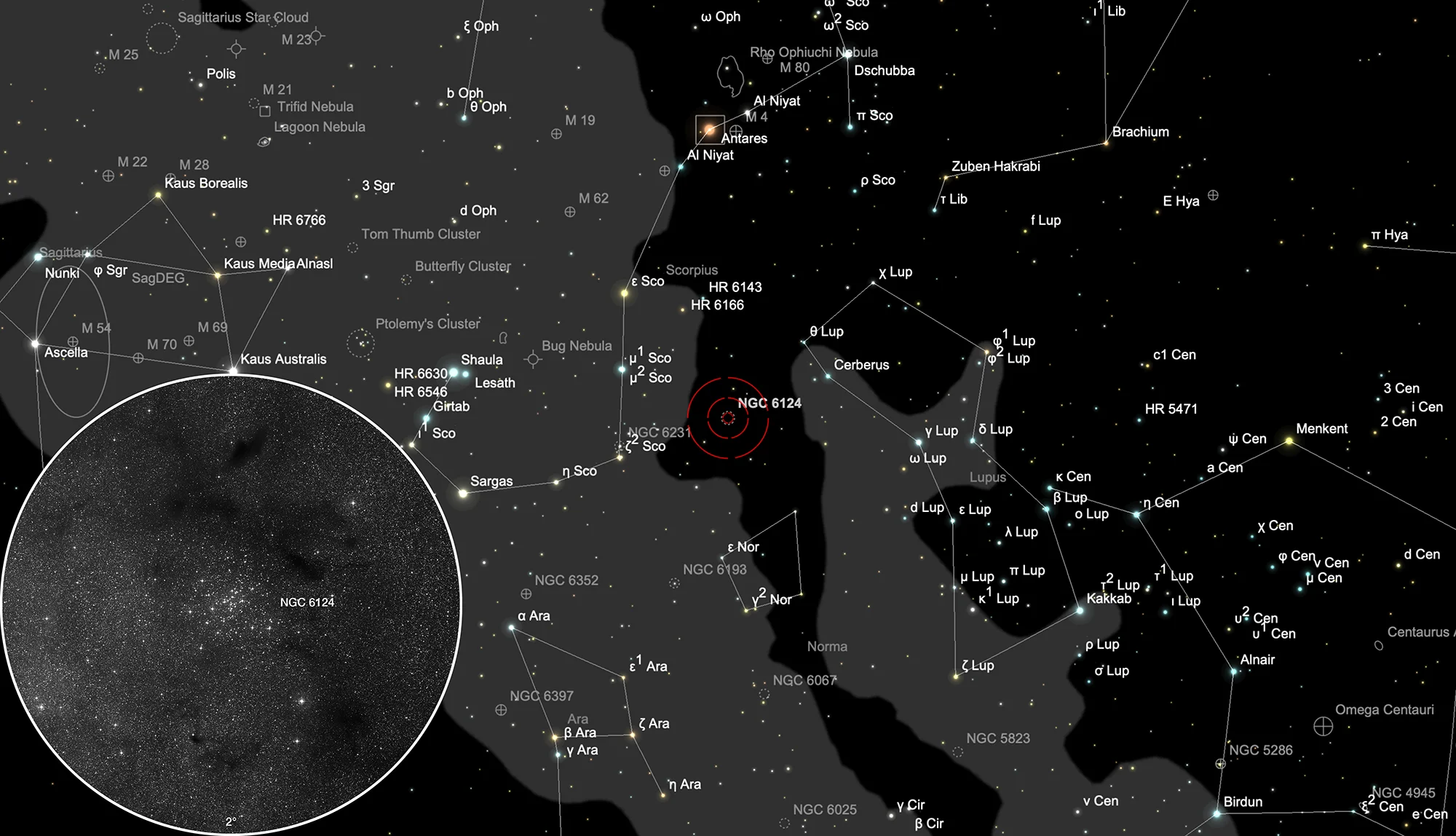Open Cluster NGC 6124

History
The open cluster NGC 6124 was discovered in 1751 by the French astronomer Nicolas-Louis de Lacaille (also: Abbé de La Caille). He used a 1/2-inch telescope at 8x magnification during his expedition to the Cape of Good Hope. On his list of 42 discovered nebulae he listed the cluster as number eight with the notes: «It looks like a fairly large comet without a tail.» [8]
James Dunlop listed this cluster as Δ 514 and observed it five times using his 9-inch speculum reflector at Parramatta, New South Wales in Australia. First observation on 10 May 1826. He described the cluster as follows: «A round cluster of small stars of nearly equal magnitudes, about 12' diameter, considerably congregated to the centre, not rich in small stars. This answers to the place of 44 Normae, but there is no nebula.» [50]
While observing from South Africa John Herschel listed this cluster as h 3626 and made two entries. Sweep 456 on 5 June 1834: «Viewed; a brilliant cluster class VII.; pretty rich large; irregularly scattered; fills field, stars 8, 9, 10, 11 mag.» Sweep 479 on 4 August 1834: «Cluster, bright large, loosely scattered; not much compressed in the middle; fills nearly a field; consists of about 50 or 60 stars 9...11 mag.» [11]
Physical Properties
| Designation | NGC 6124 |
| Type | OCL (II3m) |
| Right Ascension (J2000.0) | 16h 25m 17.2s |
| Declination (J2000.0) | -40° 40' 01" |
| Diameter | 40 arcmin |
| Visual magnitude | 5.8 mag |
| Metric Distance | 0.470 kpc |
| Dreyer Description | Cl, B, L, pRi, lCM, st 9…11 |
| Identification, Remarks | h 3626; GC 4184; OCL 990; ESO 331-SC3 |
Finder Chart
The open cluster NGC 6124 is located in the constellation Scorpius. At a declination of -40° it is not visible from central Europe. On 30 May it in opposition with the Sun and is therefore highest in the sky at local midnight.
